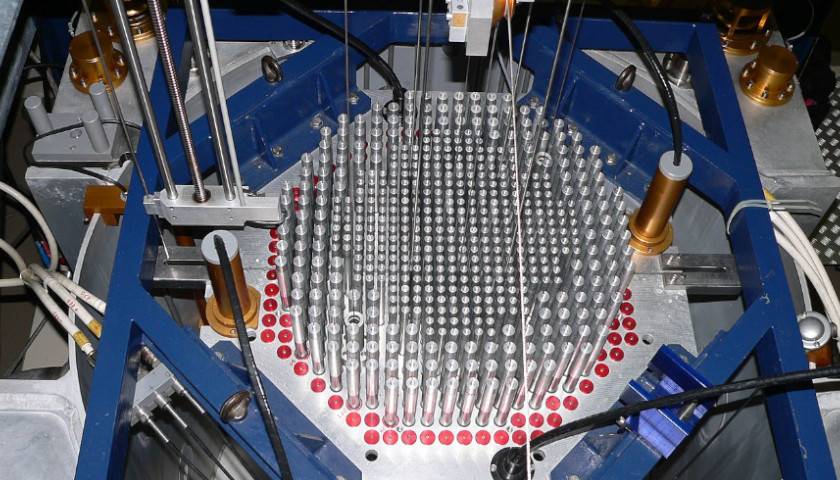by Morgan Sweeney
The LENOWISCO Planning Commission is deep into the research phase investigating the possibility of Southwest Virginia becoming the home of one – or several – small modular nuclear reactors, a venture catalyzed by the governor’s energy plan.
Former Gov. Ralph Northam is known for some sweeping reforms he initiated in office, and his energy policies were no exception. Northam’s administration established policies that, like California, outlaw the sale of gas-powered cars in the commonwealth starting in 2035 and demand 100% zero-carbon, renewable energy generation by 2050—five years after California.
Youngkin’s response has been to devise a more moderate energy plan that doesn’t abandon the pursuit of alternative energies but attempts to relax the timeline, much of the plan has not yet made it into passing legislation. He’s also advocated exploring other non-carbon-emitting energy technologies, like hydrogen generation and nuclear energy.
In particular, he wants Virginia to invest in small modular reactors or SMRs – in theory, less cost-prohibitive than larger nuclear power plants. The Federal Nuclear Regulatory Commission approved a design for SMRs in the U.S. in January.
Youngkin unveiled his “all-American, all-of-the-above” energy plan in October 2022 in Lynchburg and announced that it included a “moonshot”: “Build[ing] a small, modular reactor that will supply baseload demands within the next 10 years.”
This now-famous statement prompted members of the LENOWISCO Planning Commission to get to work. LENOWISCO, an acronym for Lee, Wise and Scott counties and the independent city of Norton, all of which comprise part of Southwest Virginia.
In a study funded by the Virginia Department of Energy and GO Virginia Region One, Dominion Engineering, Inc. (no affiliation with Dominion Energy) assessed the feasibility of seven sites in Southwest Virginia: Bullit Mine complex, Limestone Mine, abandoned mine land in Lee County, Mineral Gap, Project Intersection, Red Onion Industrial Park and Virginia City Hybrid Energy Center. All seven ended up being viable.
“It was a blanket feasibility study to determine, ‘Okay, does our region have what it takes for SMRs?’ We didn’t know. We really weren’t sure,” Miller told The Center Square.
“We were surprised just how feasible the area actually is…We’re either equal to or better than a lot of the sites that are in other parts of the country.”
Though months have passed, Miller said the commission’s goal is to fully evaluate all the sites and present all viable options to energy companies interested in investing rather than narrowing down the selection now.
The commission has started a supply chain study and is about to dive into a public outreach period to gather area residents’ feedback about the sites.
Miller anticipates the commission will be finished with both tasks before the end of the year, likely in December.
At that point, if they haven’t already, they will reach out to more providers – but otherwise, the preliminary work needed to get the project off the ground will be complete. Miller emphasizes that providers could choose one or none of the sites evaluated in the study; they could bypass the region altogether or choose another currently unlisted site.
All parties involved in bringing an SMR to Southwest Virginia have until 2032 to get the reactor up and running and fulfill significant energy needs to meet the governor’s goal.
In terms of economic benefit, it’s not so much about the number of jobs the SMRs will provide as it is about the tax base they will supply, according to Miller. Through the Regional Industrial Facilities Authority, LENOWISCO localities can distribute the tax revenue through revenue sharing.
– – –
Morgan Sweeney is a staff writer covering Virginia and Maryland for The Center Square. Morgan was an active member of the journalism program as an undergraduate at Hillsdale College and previously freelanced for The Center Square.
Photo “Nuclear Reactor” by Rama. CC BY-SA 2.0 FR.




